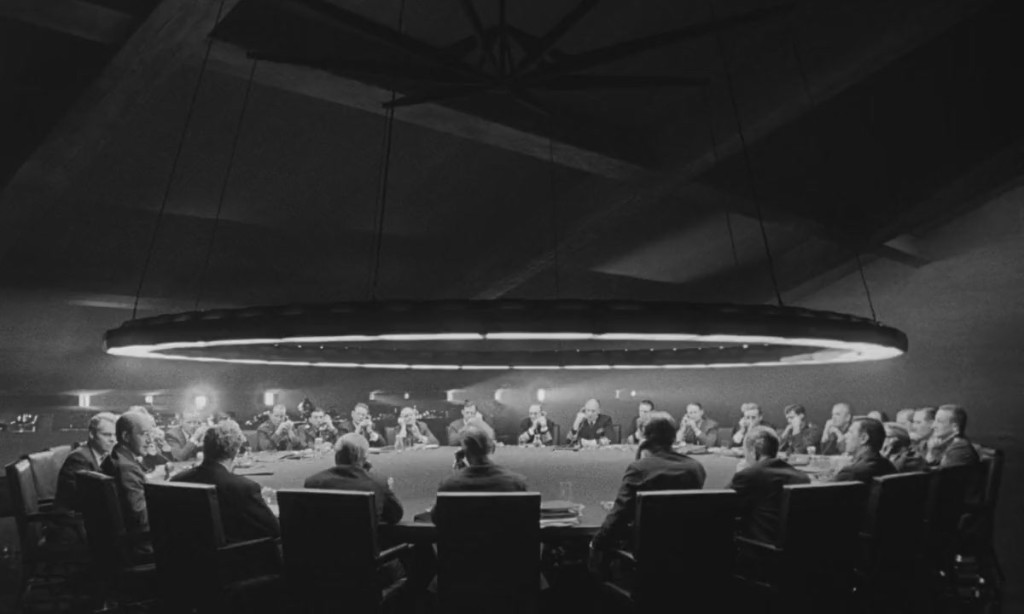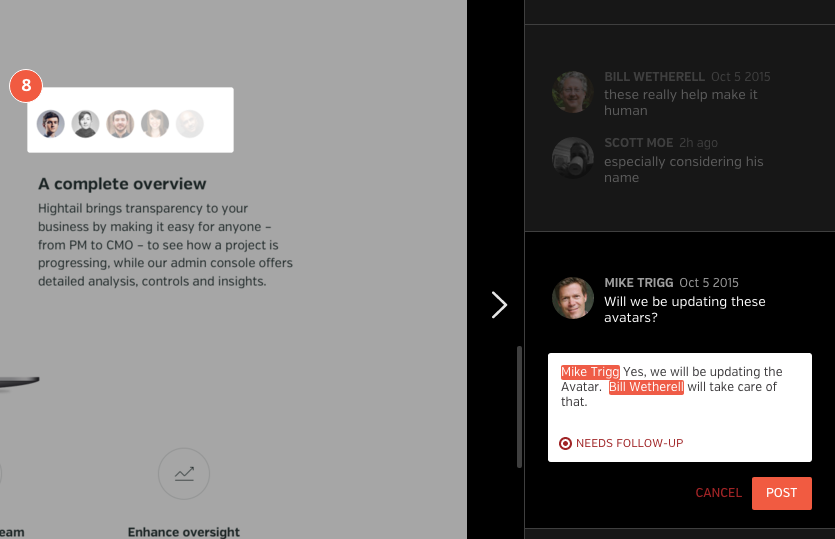When I co-founded my startup PunchTab, one of the first things I did was institute a meetings rule. If you added an internal meeting to anyone’s calendar, it cost $1 per minute scheduled. That’s right – at PunchTab you had to pay to hold a meeting, with the fees going to a company fun fund.
It’s a somewhat extreme measure, but I know that many people will understand the problem I was hoping to solve. Meetings are too often unproductive, tedious and a waste of time. Aside from that, I was building a team of self-starters so I didn’t want a culture of justification and delegation to permeate the company. If you had an idea, you went and did it, gathering feedback and other input through informal channels, not official meetings.
Eventually, I ended up being the first one to call a meeting, which I ensured didn’t run long so I wasn’t out of pocket too much (it set me back $20). In our first year at PunchTab, we had a total of three internal meetings – not counting customer engagements and any casual hangouts outside of meeting rooms when people would get together to quickly discuss moving projects forward.
Of course, this was easy for us because we were a small startup of a dozen people working together in one space where ideas and conversations flowed naturally. But exploring alternatives to scheduling meetings can also help larger companies be more effective and productive. The following five alternatives to meetings could help you cut the amount of time wasted by irrelevant and unfocused meetings and create more effective ways of communicating for everyone at your business.
1) 1:1 > 10:1
If you gather 10 people in a room to present a new project or get feedback on a piece of work, you may be making good use of your time but you’re not making the most of theirs. The likelihood that everything you have to say is 100% relevant to each person and actually sinks in, is small. Not only are you wasting their time, you’re probably not getting their full attention either.
Instead make time to share your ideas early in one-on-one situations, whether that’s an informal face-to-face conversation, a phone call or instant messaging chat. It may take you longer than your one-hour meeting to speak with everyone, but you’ll have communicated your needs more effectively and given everyone else more time to get on with whatever it is you want from them. Doing it early also helps you get buy-in, as people are there when the baby is born.
2) Make personal connections
People are more likely to do good work if they actually know you rather than you just being that person at the end of a meeting table. Getting to know everyone at a small-to-medium sized business takes effort but it’s worth doing. Even at bigger companies, you can cultivate relationships with departments most relevant to you or identify internal influencers whose networks can help extend your own.
The best way to foster personal connections is to create informal environments for people from different groups to meet. At Hightail, we have free lunch on Mondays where everyone sits down to break bread and get to know each other. Recently, we installed a cookie oven and there’s nothing like the smell of freshly baked cookies to bring random people together for a quick chat and a nibble.
3) Your leaders should be conduits, not barriers
The leaders at your company, from the executive team to department heads, are in positions of great influence. But too often this means that decisions trickle down while information flows back up, usually via meetings where edicts are outlined and reports dutifully given (just in time to start preparing the next set). I believe this model is upside-down – leaders shouldn’t waste people’s time with meetings just so they can find out what’s going on.
As CEO of Hightail, my role is to use my personal connections to know what everyone is working on and then use my influence to connect individuals and small groups who may be able to help one another. As long as our business has clear goals and we hire people who like to take the initiative, I can trust them to explore and develop projects without constantly scheduling meetings in order to present ideas for approval.
4) Use software to work together better
Some of the earliest successful collaboration apps were those that made having meetings easier, especially for offsite workers, global offices and distant clients. Apps like join.me, WebEx and GoToMeeting certainly improved on the basic conference call, but their ease of use is also responsible for the proliferation of more useless meetings.
Far better to utilize services like Basecamp, Asana and Trello that allow teams to share information, manage projects and stay up to date using shared online tools. Hightail’s creative collaboration feature, Spaces, makes giving feedback and managing the creative process easier. Collaboration can be done more effectively – you just need to take discussion off the (meeting) table and have it online.
5) Make everyone an internal publisher
Meetings can be a useful way to share information about what different groups are working on. But these are usually the meetings that busy people feel ok about skipping altogether or show up with their face buried in a laptop or mobile phone. You need to find new ways of sharing updates that people can digest in their own time.
An internal blog or wiki can be a great place to post information about projects, departments and other happenings. A shortly weekly email can highlight what’s going on in a subject area, while Instant Messaging groups are a quick, easy and informal way to bring people together to discuss relevant topics.
We could all do with fewer meetings in our lives so these five tips should help cut down your calendar and make everyone at your business more productive. And the best thing about having fewer meetings? When you do finally schedule one, people actually pay attention.







Nicely said. Agreed. I have been in more unproductive than productive meetings. I appreciate your thoughts.
I could not agree more with this article, the times I have been in a meeting for 5 hours and after the first 45 minutes could only think about what I was going to have for dinner that evening..
Ranjith, wonderful post!
Yesterday, with 3 advisors, I held a very effective gathering that was both short and fun. After we quickly covered the “business stuff”, we shared our disdain for meetings, especially long ones. I told story of delay in Paris Peace Talks (Viet Nam era) because operatives couldn’t decide on the shape of the table! One editorial writer suggested that all participants should be required to stand.
Peace in spite of the odds, john
PS: Do many people recognize the bizarre meeting room pictured?
What you’re saying makes perfect sense and I agree that when you have 10 people who are afraid of not being heard, included or appreciated, a meeting will not be productive. We tend to communicate on basis of these inner response patterns. We’ve been conditioned to do so through social conditioning. Hence we tend to isolate ourselves in conversation or communicate in a way that is divisive.
In our The Language of Emotions platform we aim at enhancing attention management and group intelligence to cultivate a sense of joint intelligence wherein every member of a group knows his her input is valued, taking turns to contribute to a truly collaborative conversation, incorporating what others contribute into what they bring to realize the objectives of the group as a whole. The whole is more than the sum of individual contributions. This is how the consciousness of a group or organization is raised. In this light collaborative conversations or dialogues make much more sense than just having a meeting, the traditional way.
Nice pic’ from Dr. Strangelove… provides good example of ineffectual meetings all on its own! Appreciate your comments and suggestions for cutting down meetings by fostering relationships & natural collaboration. If only the worker bees (like me) had better opportunities to affect these changes you suggest. Will begin in my realm of influence, and see how/if it grows. THANKS for sharing the wisdom.
Hey, great observations, I’d like to implement some of your ideas straight away. Some of it makes a lot of sense.
But while you’re at it, why not make your product deliver what it promises. Too many excuses from your staff as to why I wasn’t able to upload large files.
Quite simply, pathetic dodging and a very limited service. Very dissatisfied.
Wow this is absolutely amazing. We have been saying this stuff to each other for years, and some days spent entire days in meetings. We would have meetings about meetings, and meetings just to find out what we were each doing, and sometimes the same things would be said in each meeting for the benefit of different people. So unproductive, and extemely frustrating. And the part in section 3 is classic because that was us to a tee. Our management would meet and make big plans, and then the job would start but the plan wasn’t right because management didn’t know all the details so the project would usually be a failure or much less productive than it could have been. I think meetings just for meetings are a great way to ruin a company! Thanks for putting all of this down.
The article sounds a bit like a fad diet – “eating makes us fat, so let’s stop eating!”. How about making your ineffective, boring meetings more effective and productive? – equivalent to “how about eating healthily?” Introducing fad management systems for the sake of changing something (because that is what cool leaders do!) is about as boring and time wasting as it gets.
Hi John. So far another commenter, Michael Duffy, has obviously got the reference. We also thought of using the meeting room scene from Star Wars where Vader chokes Admiral Motti. But the Strangelove image is a better fit. I love how everyone is on their phones – it’s like a preview of how things would be in the future.
Thanks for getting in touch. That Paris Peace Talks story is astonishing.
There’s no share button to share this post / article?
Hi Joe. Top right of the article is a “Share this post” link that allows you to share the article via Facebook, Twitter, LinkedIn and Google+.
Wow! Those are GREAT ideas! Let’s have a meeting to discuss them!
Thanks for this – no meeting today
Very well said.i appreciate. $1/ min needs to be tried out.
My best use of time has been observed when I heard more successful people from mine or similar field.
EdT makes a great point and yeah to much of all else that has been suggested. We are a social species and need a way to ‘be’ that. I wonder what the tally would be if the number of minutes in one with one meetings were added up? Not saying it would be wrong or bad just curious to hear that number
John, thanks for sharing your story. I was at the Churchill War Rooms recently with my kids and told them that they couldn’t fight in there…
Haig, thanks for reaching out. I’m always happy to jump in to help resolve any issues that you are experiencing. We have been doing a lot of product work that I can share with you directly (see http://www.hightailspaces.com for a quick look) if you want to shoot me a note at ranjith at hightail dot com, I’ll look for it.
EdT, thanks for your thoughts. Could be a fad, but one that I’ve practiced longer than I did Tae Bo! Running effective meetings (like anything else) does benefit from frameworks, doesn’t have to be the one above but I encourage putting one in place that works for you and your team.
Gosh It’s so good to have so many people validate my feelings about meetings/the same boring people who are only allowed to talk.
Blah, blah, blah. It’s so no one listens
? Are you hiring.
Many interesting points… but I detect a vested interest in that it comes from a Cloud Based Company.
I am in the film production and advertising industry. A collaborative enterprise with various management structures..both flat and hierarchical requiring integrated decisions and processes.
I do wonder how “meeting-less” collaboration works when there are visuals and references to share and discuss.
How does one present and effectively discuss… wardrobe, properties, packs, products, storyboards, talent reels, location photos…to all the stake holders via the cloud?
An internal meeting in my business does not mean it occurs inside the single office of one stakeholder. Various offices, locations, workshops and studios are involved by necessity.
I am also very sceptical of the idea that management structures will allow decision making without involvement in the process.
Wow. Wait while I put on my dark glasses – the brilliant insights are blinding.
Meetings are as much about interactive planning, validating, committing and executing a common goal than a simple exchange of ‘data.’ Picture the probable success of a football team that foregoes team meetings and just sends everybody weblinks to screen shots of opponents’ plays in lieu of any team meetings.
The problem with meetings is not the possibilities of success but the execution of their leadership. (Yes – successful meetings require effectively structured leadership. “Disruptive” might work for the App driven service industry but not in goal driven meetings).
Try this meeting recipe: 1. Write and distribute an agenda and goals
2. Stick to the agenda; allow ‘new business’ after completion of the agenda
3. Recognize that every individual’s time is valuable; respect that and keep everybody focused on the agenda
4. Put away the iDevices; participation will grow by 100% and time will shrink by 50%
5. Offer everybody an equal opportunity and say, and be respectful of all viewpoints. It is empowering and motivating.
6. Stick to the team’s goals, be concise and be on time.
7. Leading, managing and coaching go hand in hand.
Re: all those trivial comments about the table at the Paris Peace Talks: Those table negotiations were a critical extension of the psychology and posturing of the parties, and set the stage for what was to come. If you don’t understand or appreciate that, I predict that one day somebody who does will order and eat your lunch, and then slip you the bill before you’ve even looked at the menu.
Great post and really important idea being conveyed. Too often nothing can move forward without a meeting. Unchecked this can lead to an environment where nothing can, or does, move forward. I’d take it a step forward and think about ways to streamline the email chains that take people days to keep on top of and days more to respond. It can be like a dog chasing its tail and a real time suck for people that would better serve your company by being able to do the work they were hired to do rather than answering never-ending email chains.
Excellent post! I believe meetings, at times, serve more as “therapy sessions” – meeting organizers “feel” better taking everyone to a conference room, and productivity takes a backseat. There’s also the aspect of habitual attendees, conditioned to believe that meetings must take place, as part of “The Process”. I have known some development teams that won’t move an inch on a functional spec till they’ve “had a review meeting”, even if the spec is clear/repetitive and the eventual meeting was nothing more than the organizer’s monologue. More power to you Ranjith .
I would one further rule. If you do have to have a meeting, make sure there are no chairs. That way, matters are usually short and to the point.